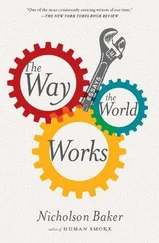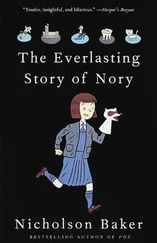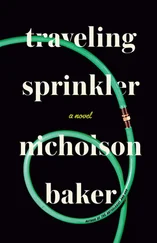Philip Morse, 15 15an MIT acoustician and founder of Rand Corporation, the Air Force’s non-profit think tank, had spent much of his career evaluating the destructive efficacy of missiles, depth charges, and nuclear weapons, first during the war, as director of the highly successful Anti-submarine Warfare Group, and then later at the Defense Department’s Weapons Systems Evaluation Group (where Morse argued in favor of the hydrogen bomb) and its successor, the Institute for Defense Analysis; in 1947 he became the first director of the Brookhaven nuclear laboratory and (in his account) the first person to suggest to the Navy that it should start building nuclear submarines; in 1963 he became a board member of the Council on Library Resources. Around that time, as director of MIT’s Operations Research Center, he had the idea of applying OR’s mathematical methods to the workings of MIT’s library; out of that grew Morse’s thickly mathematical treatise, Library Effectiveness (1968), which uses a technique called Markov analysis to determine whether a book of a particular age and number of previous circulations is likely to remain useful; in order to gather detailed circulation statistics, Morse wanted to computerize 16 16the library. The modern library, he felt, “cannot now be operated 17 17as though it were a passive repository for printed material.”
One of Warren Weaver’s disciples from the Applied Mathematics Panel was Merrill Flood, a game theorist at Rand who had, during the war, produced a secret OR analysis 18 18of the ways that B-29s might bomb Japan. (Bombing with or without propaganda leaflets, incendiaries, or “poison gas” 19 19were some of the options listed by Flood.) Flood had risen to become president of the Operations Research Society of America (a group Philip Morse had founded) in the early sixties; Flood believed that OR’s heuristic techniques could help the nation take “very major steps 20 20to ‘modernize’ its vast transportation system,” and that sophisticated war games and business games, in which “many of the decisions normally 21 21made by humans in real life are made by the computer,” would teach us how to design a better world. Flood’s nuclear-powered wonderland was just around the corner, in fact: “an abundance of nearly free energy, and economical computers for controlling it, are scientific accomplishments already in sight,” he wrote in 1962. About that time, Verner Clapp hired Flood, 22 22along with a team of military-intelligence experts, to produce an OR-influenced cost-benefit study, Automation and the Library of Congress. The team was headed up by Gilbert W. King, 23 23chief of research at Itek Corporation; 24 24Itek was (in those days) a stealthy company run by ex-CIA paramilitarist 25 25Frank Lindsay, charged with producing the high-resolution spy-satellite cameras used to microfilm the Russian hinterlands from many miles up. Gilbert King, Merrill Flood, and the others proposed that the Library of Congress’s cataloging and processing functions undergo a comprehensive computerization, using a “trillion bit memory”; the stacks would be closed 26 26to researchers, so that monitoring software could track book usage, and so that books themselves might be shelved, unbrowsably, not by call number but by “demand frequency.” (There would be “a complete independence of the physical location of items from their descriptive mapping in the catalogs and files”—in other words, a total reliance on the location records held in the computer.) Microfilm was getting so good, according to the King Report, that soon “the circulation of most documents in their printed form may become unnecessary”; the report suggested that several of the library’s divisions (including the Defense Research Division, funded by the Department of Defense 27 27but administered by the Library of Congress, and the Legislative Reference Service, which answered legislators’ questions) might convert their holdings to a computer-coded microfilm-storage system called Filesearch. 28 28(Fortunately they didn’t: the U.S. military used the Filesearch 29 29system to index thousands of microfilmed North Vietnamese documents as part of its intelligence work; when the hardware was superseded, all the indexing information was lost.) None of this would be cheap: the King Report’s writers unanimously proposed that the Library of Congress devote between fifty and eighty million dollars — three times the library’s total annual budget — to the automation of its basic functions.
Quincy Mumford, the Librarian of Congress, wasn’t quite so adventurous as Clapp, and he couldn’t put together that kind of money. But the wiry, energetic 30 30Clapp wasn’t too discouraged; in 1964 he hired Lawrence F. Buckland 31 31to study the practical questions of computerizing the Library of Congress’s catalog-card printing operation. Buckland had been an officer at the Air Force’s Rome Air Development Center in the fifties, where he had helped underwrite Gilbert King’s large-capacity “photoscopic” computer memory (as part of an attempt to create an automatic Russian-to-English translation machine); later Buckland moved to Itek and then, in 1962, he founded Inforonics, a database consulting and publishing company whose early clients were the Air Force, the CIA, and the National Science Foundation. (Buckland’s company produced the first major reference book to be typeset directly from a digital database, the 1969 edition of the American Heritage Dictionary. ) A team of systems specialists at United Aircraft also got involved with the Library of Congress’s computer-cataloging project (with the help of steady grants from the Council on Library Resources), and a person named Henriette Avram 32 32was engaged to tune and manage the increasingly costly effort — Avram’s résumé included assignments at the National Security Agency, the secretive federal monolith devoted to electronic surveillance and cryptanalysis, and the American Research Bureau, the company that produced the Arbitron television ratings. By the late sixties, after some stops and starts, Clapp and the library he was trying to manage from afar finally had a machine-readable cataloging (MARC) record — ungainly, cabalistically coded, but twenty years ahead of its time. Some of Verner Clapp’s ideas 33 33and enthusiasms “have seemed a bit quixotic,” said William S. Dix, then librarian at Princeton, “but in his hands the impossible dream had a way of approaching reality. For he never gave up.” Clapp was a classic bleeding-edge man. Just about every machine dream that administrators now have, Clapp had, and funded, forty years ago.
Helping large research libraries to disencumber themselves of old books was a top priority: Clapp gave a grant to his erstwhile Library of Congress colleague John H. Ottemiller 34 34(a former OSS documents-gatherer who ended up at Yale’s library), which Ottemiller used to pay faculty members to go through the Yale stacks, deciding what to get rid of or move offsite, as part of a “selective book retirement” study; Ottemiller wrote that he saw “a possible need 35 35for putting greater emphasis on the discarding of materials rather than their storage.” (Paying the faculty weeders was necessary, Ottemiller said, to overcome “a loss of enthusiasm for the project.”) But discarding was maybe a little ho-hum — how about holographic storage? Clapp hired Arthur Carson, 36 36of Carson Laboratories (who had spent much of his career at United Aircraft working on the Air Force’s flightless nuclear-powered airplane), to investigate the recording of texts in rectangular crystals of doped potassium chloride; unfortunately, the stored images faded a little every time the lasers read them. Fiber optics? 37 37Clapp asked the Institute for Scientific Information to use “minute but flexible threads of light-conducting material” in a handheld copying device. Clapp was especially drawn to closed-circuit TV; it was attractive, he wrote, because it promised to contribute to the efficiency of library work by “reducing the required number 38 38of collections of specialized or little-used material.” If you could combine closed-circuit TV 39 39with an automatic, pneumatic page-turning machine, say, you might really have something. Thus in 1958, Clapp’s council contracted with the de Florez Company 40 40to develop a pneumatic page-turner, which would allow books to be microfilmed on autopilot, or read remotely by closed-circuit television. (The machine was very handsome: with its air tubes and angled lights, it looked like an expensive piece of dental-office equipment.) The de Florez company was founded by Admiral Luis de Florez, the first chairman of the CIA’s Research Board — an ingenious inventor of oil-drilling equipment and flight-control instrumentation who also advised the CIA about the potential for radiological weapons 41 41(whether to use “light dosage contamination” for example) and the promise of drug-facilitated interrogation. For a time, Clapp and his board of directors thought that there might be commercial possibilities for the de Florez page-turner, but it didn’t live up to expectations. After many tinkerings and infusions of capital, and a trial period in the microphotography lab of the New York Public Library, the machine was set aside; eventually it was pronounced “not particularly suited 42 42to the handling of library materials.”
Читать дальше












